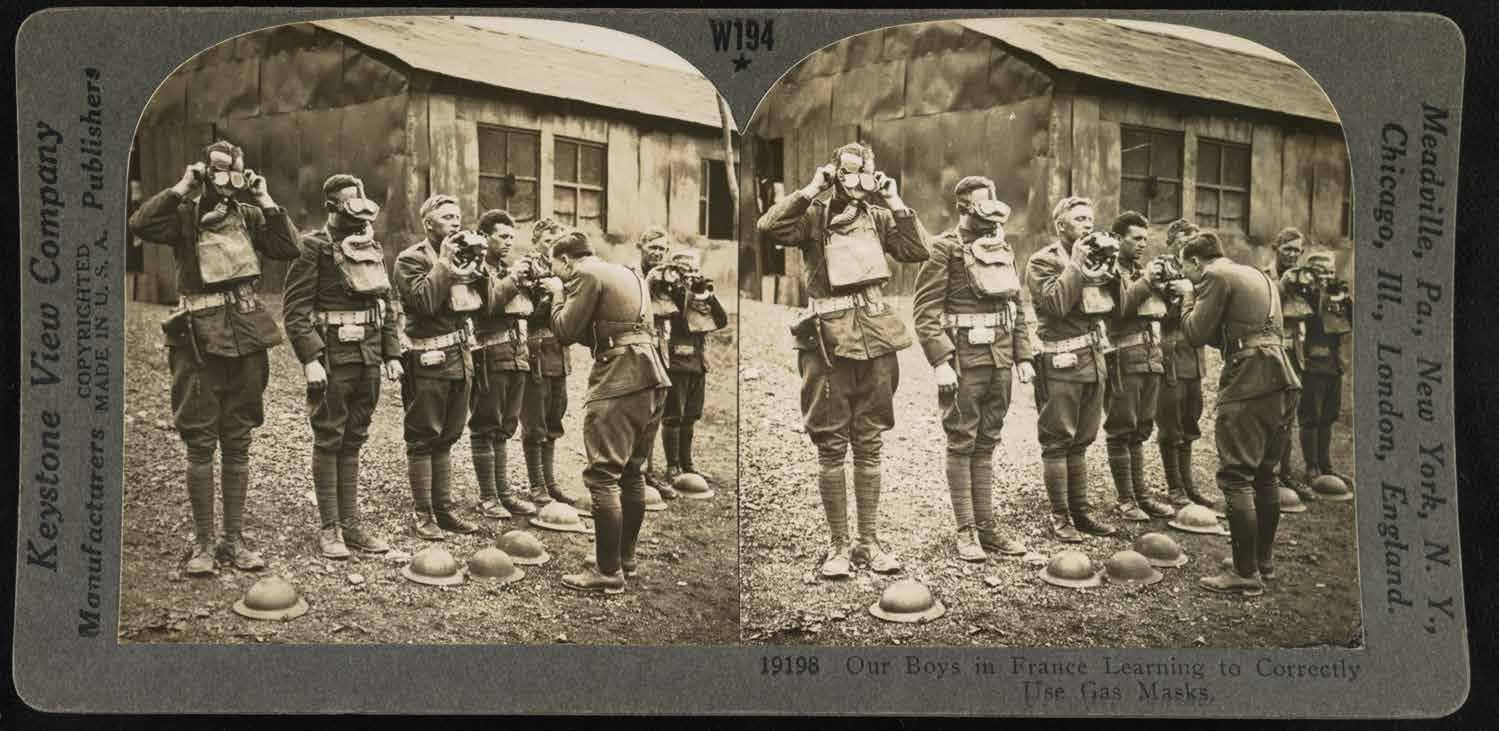Equally extraordinary are the pictures themselves. The Poznań Fotoplastykon is starting a new chapter with a display of stereoscopic photographs from World War I, a time immediately before Poland recovered its statehood after more than a century of bondage. With this theme, the exhibition alludes to the recent centennial of the country's regaining of independence. A few of the stereoscopic photographs present snapshots of Poland, which served as a battlefield for foreign powers. The photograph "Our victorious troops enter Łódź" portrays a marching Prussian army. Some of the pictures have nothing to do with the armed conflict. "A church in Łódź", which depicts the Church of the Holy Ghost, and "The Łowicz market square with a view of Napoleon I's former residence", both portray sites of historic significance in the respective cities.
In addition to pleasing the eye, stereoscopic photographs were used for propaganda. Images of well-maintained buildings in picturesque cities served as evidence that occupied towns and cities were well managed. On the contrary, enemy forces would be shown leaving a trail of destruction, as depicted in "A Hotel in Ortelsburg (Szczytno) destroyed by a Russian grenade" and "The damaged Mława factory". The enemy's savagery was underscored with battlefield scenes, as in "The proud northerners who fought in Flemish battlefields", which shows fallen soldiers. The majority of the people portrayed in the pictures were actual servicemen, the idea being to create an idealised image of war. The pictures also show the preparations of troops for battle. An example is "Military academy recruits practicing short bayonet thrusts", which purveys an image of responsible commanders and combat-ready soldiers.
Another essential role of the keiserpanorama was to preserve the memory of momentous historic events. An example is the scene from a Paris conference in 1919-1920, showing deliberations in the French Ministry of Foreign Affairs building on the Quai d'Orsay. Those present in the room included US President Thomas Woodrow Wilson, UK Prime Minister David Lloyd George and French Prime Minister Georges Benjamin Clemenceau. All of the above are also shown in another photograph, "Departure from the Palace of Versailles", picturing politicians after signing the peace treaty that officially ended World War I.
Every visit to the Poznań Fotoplastykon is a journey through time. You can now use stereoscopic photography to leap a hundred years back and experience events that determined the fates of Poland and the rest of the world. This series of photographs showing the war, city views and historic events comprises a record of a by-gone era which will not only entertain but also educate the visitor.
Marcel Skierski
translation: Krzysztof Kotkowski
- Gleams of freedom - an exhibition in the Poznań Fotoplastykon
- Centrum Informacji Kulturalnej (Cultural Information Centre), ul. F. Ratajczaka 44
- 6.03 - 31.05, opening hours: Monday - Friday 10 am - 7 pm, Saturday 10 am - 5 pm, Sunday closed, last admission 1 hour before closing time
- tickets: regular admission - 5 pln, reduced admission - 2 pln, family tickets - 10 pln, group tickets (groups of 10 or more) - 20 pln
© Wydawnictwo Miejskie Posnania 2019


